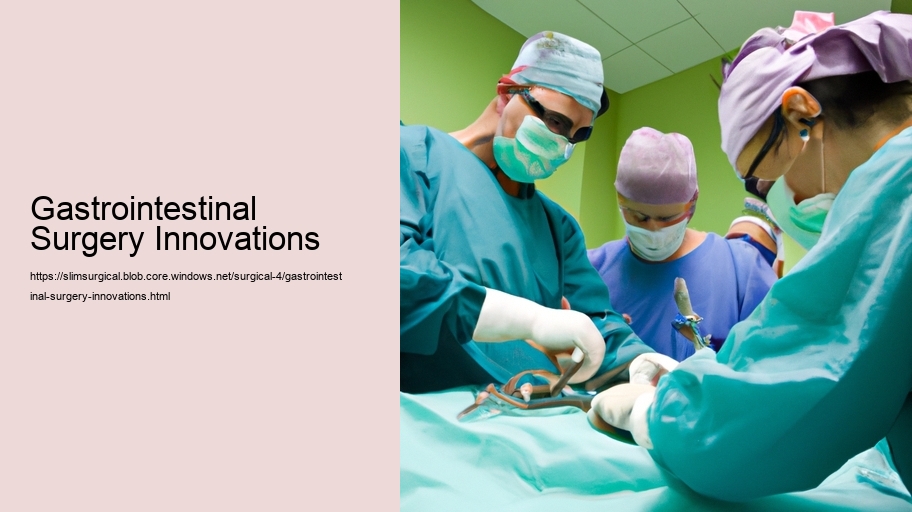Gastrointestinal Surgery Innovations: Paving the Way for Enhanced Patient Care
The field of gastrointestinal surgery has witnessed a remarkable transformation over the past few decades, driven primarily by a relentless pursuit of innovation. These advancements are not merely technical; they reflect a deeper understanding of human anatomy, physiology, and the pathophysiology of diseases that affect the digestive system. They also embody the commitment of the medical community to enhance patient care, reduce recovery times, and improve overall outcomes. This essay delves into the recent innovations in gastrointestinal surgery that have revolutionized the way surgeons approach various conditions affecting the stomach, intestines, and related organs.
Minimally Invasive Techniques: The Rise of Laparoscopy and Robotic Surgery
Perhaps the most significant innovation in gastrointestinal surgery is the widespread adoption of minimally invasive techniques, particularly laparoscopy. This approach utilizes small incisions and specialized instruments, including a camera, to perform surgeries that once required large, open cuts. The benefits of laparoscopic surgery are manifold-it minimizes pain, reduces the risk of infection, shortens hospital stays, and accelerates recovery. Moreover, it leaves patients with smaller scars, which is an important consideration for many.
Taking minimally invasive surgery a step further, robotic-assisted procedures have emerged as a game-changer. Robotic systems like the da Vinci Surgical System offer surgeons unparalleled precision, flexibility, and control. The 3D visualization and articulated instruments allow for meticulous dissection and suturing, even in the most complex of cases. This technology has been particularly beneficial for intricate procedures like esophagectomy or rectal surgery, where the surgical field is narrow and the margin for error is small.
Enhanced Recovery Protocols
Innovation in gastrointestinal surgery is not limited to the operating room. Enhanced recovery after surgery (ERAS) protocols have revolutionized preoperative and postoperative care. These evidence-based strategies are designed to reduce surgical stress, maintain postoperative physiological function, and thereby facilitate a quicker return to normal activities. Key elements include optimizing nutrition, minimizing narcotic use, early mobilization, and goal-directed fluid therapy. As a result, patients experience fewer complications, such as infections or ileus, and hospitals benefit from reduced lengths of stay and overall healthcare costs.
Precision Medicine and Personalized Surgical Approaches
The emergence of precision medicine has had a profound impact on gastrointestinal surgery. Through genetic testing and molecular profiling of tumors, for instance, surgeons and oncologists can tailor cancer treatments to the individual patient. This personalized approach allows for more accurate staging of cancers and the identification of patients who may benefit from neoadjuvant therapies-treatments given before the main surgical intervention to shrink the tumor or make it easier to remove.
Bariatric Surgery Innovations
Obesity and its related complications have given rise to innovations in bariatric surgery, a subset of gastrointestinal surgery focused on weight loss. Novel procedures and modifications of existing ones are continually being developed to improve safety and effectiveness. One such innovation is the intragastric balloon, a non-surgical procedure where a balloon is placed in the stomach to promote satiety. Meanwhile, endoscopic sleeve gastroplasty is a minimally invasive procedure that reduces the stomach size without the need for incisions.
Regenerative Medicine and Tissue Engineering
Emerging from the cutting-edge intersection of biology and technology, regenerative medicine holds promise for gastrointestinal surgery. Scientists are exploring the potential of stem cells to repair or replace damaged tissues and organs. Tissue engineering, on the other hand, aims to create biocompatible grafts that can be used in reconstructive surgeries, such as for patients with severe bowel conditions or those who require complex reconstructions after tumor removal.
Conclusion
Innovation in gastrointestinal surgery is a dynamic and ongoing process. It is driven by the quest for better patient outcomes, the evolution of technology, and the expanding knowledge of human biology. The convergence of minimally invasive techniques, enhanced recovery protocols, precision medicine, bariatric surgery advancements, and regenerative medicine is not just reshaping the field-it's redefining what's possible. As these innovations continue to unfold, they promise not only to improve the quality of care for patients with gastrointestinal conditions but also to open new avenues for treatment that were once thought impossible.
